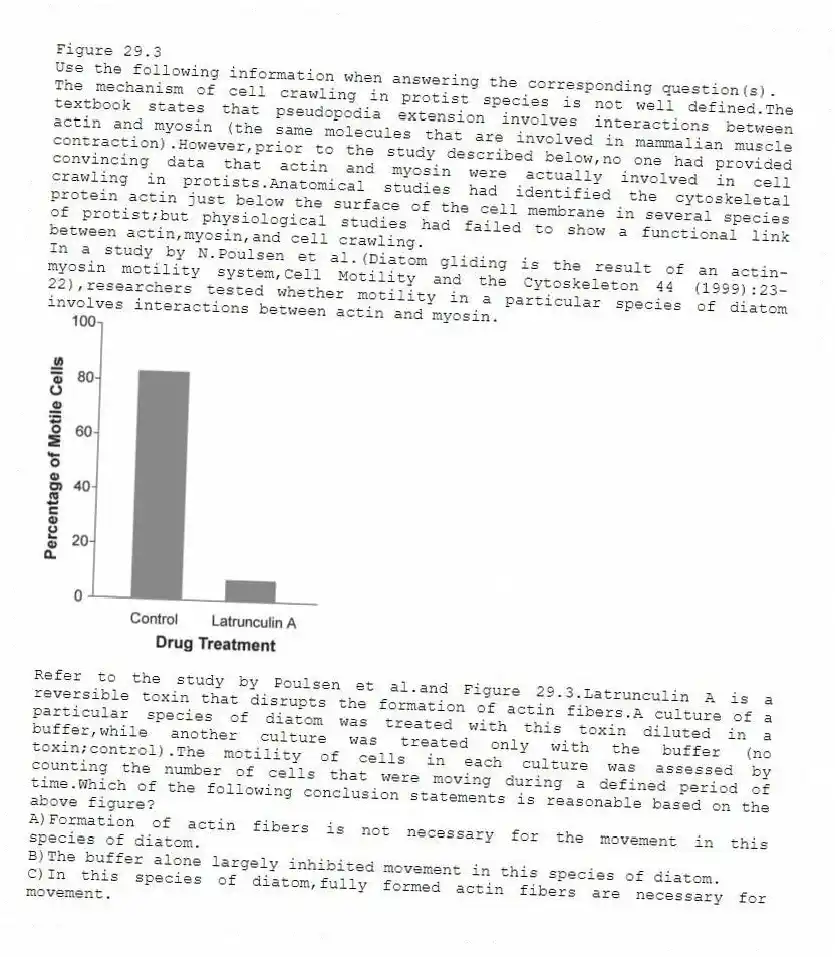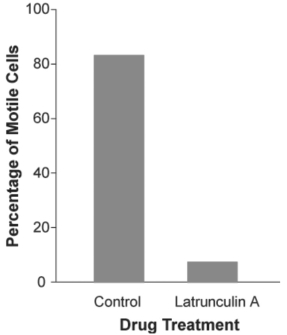
Figure 29.3
Use the following information when answering the corresponding question(s) .
The mechanism of cell crawling in protist species is not well defined.The textbook states that pseudopodia extension involves interactions between actin and myosin (the same molecules that are involved in mammalian muscle contraction) .However,prior to the study described below,no one had provided convincing data that actin and myosin were actually involved in cell crawling in protists.Anatomical studies had identified the cytoskeletal protein actin just below the surface of the cell membrane in several species of protist;but physiological studies had failed to show a functional link between actin,myosin,and cell crawling.
In a study by N.Poulsen et al.(Diatom gliding is the result of an actin-myosin motility system,Cell Motility and the Cytoskeleton 44 (1999) :23-22) ,researchers tested whether motility in a particular species of diatom involves interactions between actin and myosin.

-Refer to the study by Poulsen et al.and Figure 29.3.Latrunculin A is a reversible toxin that disrupts the formation of actin fibers.A culture of a particular species of diatom was treated with this toxin diluted in a buffer,while another culture was treated only with the buffer (no toxin;control) .The motility of cells in each culture was assessed by counting the number of cells that were moving during a defined period of time.Which of the following conclusion statements is reasonable based on the above figure?
A) Formation of actin fibers is not necessary for the movement in this species of diatom.
B) The buffer alone largely inhibited movement in this species of diatom.
C) In this species of diatom,fully formed actin fibers are necessary for movement.
Correct Answer:
Verified
Q18: Alternation of generations occurs in some protists.
Q24: Which of the following groups is matched
Q25: Assume that some members of an aquatic
Q26: You discover a new species of protist.Which
Q27: Figure 29.3
Use the following information when answering
Q28: Figure 29.3
Use the following information when answering
Q29: In examining a multicellular protist,you notice that
Q32: Consider the following data:
(a)Most ancient eukaryotes are
Q33: Which of the following protist lineages is
Q34: Consider the following points:
(a)All excavates live in
Unlock this Answer For Free Now!
View this answer and more for free by performing one of the following actions

Scan the QR code to install the App and get 2 free unlocks

Unlock quizzes for free by uploading documents